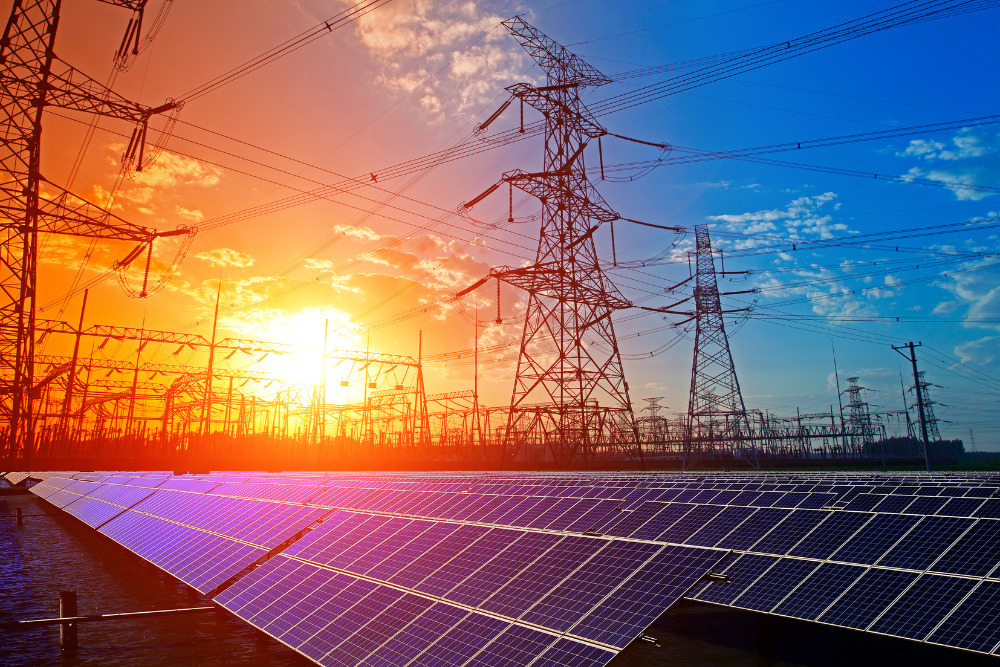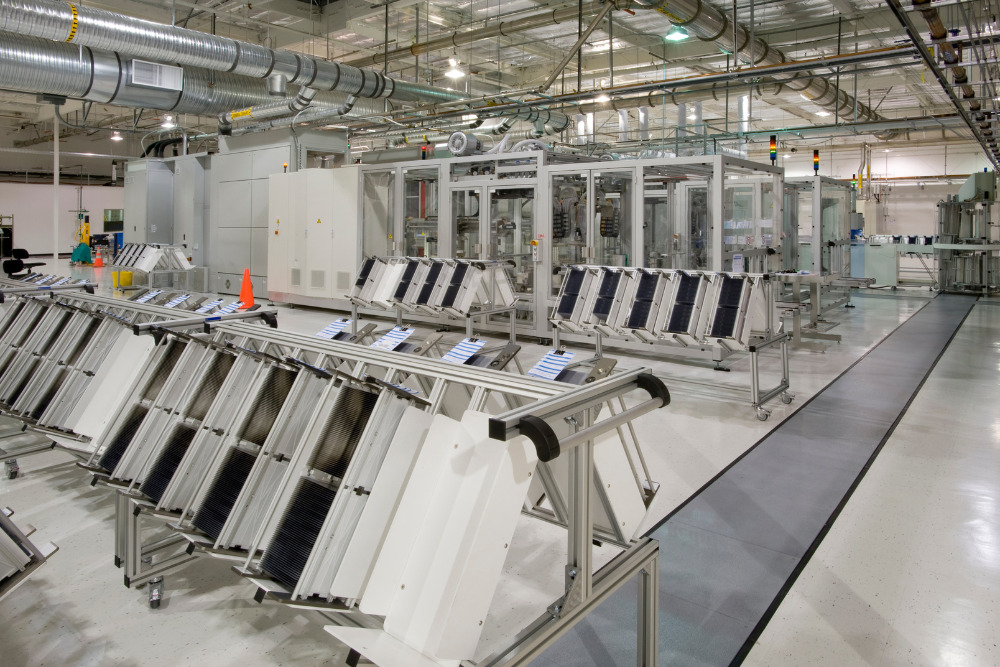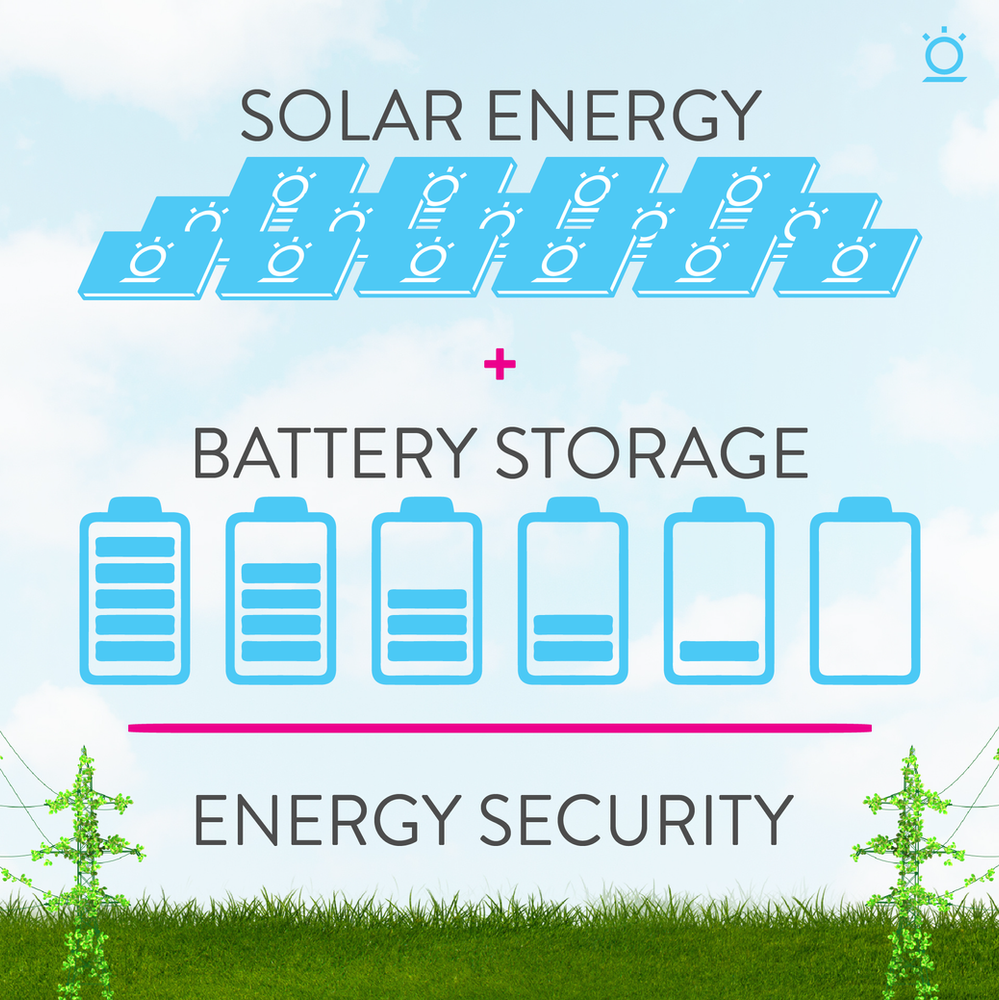
Discover the factors that contribute to the solar energy industry’s growth, how the United States stacks up against other regions for solar adoption, and how the exponential growth impacts the economy.
The global solar energy market has experienced remarkable growth in recent years. It has emerged as a leading contender in the fight against climate change and the need to transition to clean energy. But how fast is fast in the United States and abroad, and how does the growth of the solar market affect other aspects of the economy?
How Fast Is Solar Growing?
The global solar energy market is bullish and shows no sign of stopping its upward growth.
The solar energy market has been experiencing significant growth worldwide, driven by factors such as reducing reliance on fossil fuels, the advancements in energy technologies, and the increasing focus on renewable energy sources.
Here’s a look at some of the key players around the world.
USA And Canada
Solar (or photovoltaic) energy has witnessed rapid and substantial growth in the United States and on a global scale. In North America, the solar industry has been experiencing impressive expansion, with installed capacity increasing at an average annual rate of 20.1% per year between 2017 and 2022.
The solar power industry's U.S. market size, measured by revenue, was USD 17.2bn in 2022. In the same year, the market size in Canada, according to the Renewable Power industry, was USD 7.47 bn.
This growth is mirrored worldwide, as the market size of the solar PV industry as a whole increased by 20.5% in 2022.
Asia Pacific
The Asia Pacific region is the fastest-growing market for solar energy storage systems, with a compound annual growth rate (CAGR) of 28.5% from 2021 to 2028. Asia Pacific ruled the global market in 2021 and held the largest market share of over 59.49%.
According to the National Energy Bureau, China is projected to achieve a solar power capacity of 490GW by the end of 2023. This indicates substantial installation growth, with an estimated addition of 97GW in 2023.
The solar electricity generation in India should reach 39.95bn KWh in 2023, with an annual growth rate of 7.13% (CAGR: 2023-2028).
The solar energy market in Japan is estimated to reach a CAGR of 9.2% by 2028.
In 2020, the solar photovoltaic (PV) market in Africa and the Middle East was valued at USD 2.19 billion. The market is expected to experience significant expansion, reaching USD 22.68 billion by 2028. This growth indicates a compound annual growth rate (CAGR) of 30.8% from 2021 to 2028.
South Korea is expected to experience moderate growth, with a projected increase of 3.12% from 2023 to 2028. This growth trajectory will lead to a market volume of approximately 14.69 billion kilowatt-hours (KWh) by 2028.

Europe
The European solar market continues to display a strong and steady growth trajectory. Analysis shows that PV Europe predicts an average increase of 53.6 GW in the EU's solar power system capacity for 2023.
This projection represents the most probable pathway and sets the stage for a minimum annual addition of 85 GW of new solar power by 2026. Consequently, the EU solar market is poised to more than double its current capacity in the forecast period for the next four years and reach an impressive 484 GW by 2026.
The France solar energy market is projected to experience substantial growth. Its market size is anticipated to expand from 20.10 gigawatts in 2023 to 39.11 gigawatts by 2028, with a compound annual growth rate (CAGR) of 14.24%.
As of 2022, solar power accounted for approximately 12% of Germany’s net electricity production. The International Renewable Energy Agency (IRENA) announced that the total installed solar energy capacity reached 66.55 gigawatts (GW) in the same year.
The solar photovoltaic industry in Spain has demonstrated consistent revenue growth for at least five years. In 2016, the sector generated around four billion euros. However, by 2021, revenue had significantly increased to over 10 billion euros.
The solar energy market in Italy is expected to experience a gradual growth rate of 1.75% during the period 2023 to 2028, with a projected market volume of 27.61 billion kilowatt-hours (KWh) by 2028.
Latin America
Brazil’s solar energy market is anticipated to achieve a capacity of 34.20 gigawatts in 2023. Over the forecast period, from 2023 to 2028, the market projects a compound annual growth rate (CAGR) of 23.30%.
This growth trajectory indicates that the solar energy market in Brazil is set to expand significantly, with an estimated capacity of 97.46 gigawatts by 2028.
South Africa
Analysts predict the solar energy market in South Africa will undergo substantial growth during the forecast period of 2023 to 2028. With a capacity of 6,039.47 gigawatts in 2023, the market is projected to expand to 9,976.75 gigawatts by 2028. This growth reflects a compound annual growth rate (CAGR) of 10.56% over the forecast period.
Major Companies
The most prominent companies in the solar energy market include Abengoa, BrightSource Energy Inc, eSolar Inc, Canadian Solar Inc, SunPower Corporation, Trina Solar, and JinkoSolar, among others. These companies contribute to the competitive landscape by offering diverse solutions and driving innovation in the industry.

What Is The Fastest Growing Sector Of The Solar Industry?
The utility-scale sector is widely regarded as the fastest-growing sector of the solar industry.
Several factors contribute to its rapid growth:
Economies of scale: Utility-scale solar projects benefit from economies of scale, allowing larger installations that generate electricity more efficiently at lower costs.
Investors: These projects often attract significant investment from utilities and independent power producers due to their long-term contracts and stable revenue stream potential.
Incentives: Supportive government policies and incentives, such as tax credits and renewable energy standards, have further spurred the expansion of utility-scale solar, making it an attractive large-scale choice to meet the growing demand for clean energy.
What Are The Economic Impacts Of A Growing Solar Industry?
Substantial Employment
Every phase of the solar panel lifecycle generates substantial employment opportunities, creating a surge in manufacturing, sales, installation, and maintenance jobs as the demand for solar PV systems increases. This job growth benefits skilled workers and local communities where solar projects are implemented.
Furthermore, expanding the solar industry leads to increased revenue for governments. As more and more solar systems are installed, this generates taxes and fees, which boost the government’s revenue streams.
Developing solar infrastructure often involves significant investment, leading to increased economic activity in an area.

Property Owners
Property owners who lease their land for solar farms can also enjoy financial benefits. The lease payments they receive from solar developers are especially beneficial for farmers or landowners who have underutilized or degraded farmland that needs a break to be restored.
Another economic impact is the potential increase in property values. Homes and businesses equipped with solar systems tend to have a higher market value, as they offer lower energy costs and are viewed as environmentally friendly investments.
Why Are Solar Installations Increasing?
Environmental Consciousness
A growing environmental consciousness among individuals and businesses means more people choose renewable energy sources like solar power as part of their commitment to reducing emissions.
Falling Prices
Falling solar prices have played a role in increasing solar installation. Over the years, the cost of solar panels and equipment has decreased significantly, making solar energy more affordable and accessible to more consumers, including low-income households. This price reduction is driven by advancements in manufacturing processes, economies of scale, and competition in the solar industry.
While the industry has seen some supply chain issues post-pandemic, the impact hasn’t been significant enough to make the cost of solar out of reach.
Technological Improvements
Continuous improvements in solar technology have also contributed to the rise in solar installations. Increased efficiency means greater energy production from smaller surface areas. While monocrystalline and polycrystalline panels still lead the way, new solar cell technology is emerging that may drive efficiency beyond the standard 15-20% seen in mainstream panels.
The advancements in energy storage solutions, such as batteries, have also enhanced the usability of solar energy systems, allowing consumers to store surplus energy generated during the day for use during non-sunlight hours.

Government Policies And Incentives
Government policies and incentives have also played a part in the increase of solar installations. Many countries have implemented favorable policies, such as tax credits, rebates, and feed-in tariffs, to encourage the adoption of solar power. These incentives make solar installations more financially attractive, further driving their growth.
Is Solar Energy A Stable Industry?
Solar energy has demonstrated its stability as an industry, with consistent growth over the years. While no industry is completely immune to market fluctuations and external factors, solar energy has shown resilience and a promising trajectory.
The Long Lifespan Of Solar Panels
One aspect that contributes to the stability of the solar industry is the long lifespan of solar panels. Solar modules typically have warranties ranging from 20 to 25 years, and many panels continue to produce electricity well beyond their warranty period.
This longevity means a stable source of energy generation for an extended period, providing a predictable and reliable investment for homeowners, businesses, and utilities.
Recycling And Disposal
As the industry matures, we’re starting to see the very first solar panels coming to their end of life. However, the decommissioning process is manageable and can be planned for.
Regulations and industry initiatives are already addressing the recycling and proper disposal of decommissioned solar panels. With the advancements in technology, recycling, and repurposing of decommissioned solar panels, the end-of-life phase will likely become more efficient and cost-effective in the near future.
While the solar industry may experience fluctuations in terms of policy support, market dynamics, and technology advancements, the market research suggests continued growth and stability. The increasing demand for clean power generation, falling costs, and ongoing research and development efforts to improve efficiency and storage capabilities all contribute to the industry's growth opportunities.


